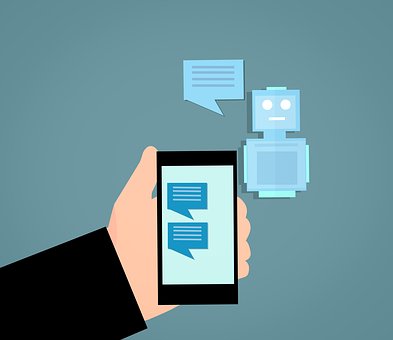Quantifiable Success Is Driving Adoption
In a Forbes piece, contributor Shep Hyken, a customer service and experience expert, called a benchmark study suggesting that $62 billion annually was lost due to poor customer engagement “scary.” Other data suggests a third of American consumers will dump a company, after just one unsatisfactory customer service experience. That benchmark study noted above also found that 41% of companies failed to respond at all to a simple customer email query, and 99% of companies failed to follow up with the customer. For a routine pair of questions, the average response time was 15 hours. In this environment, an AI-powered response time of five minutes is a competitive game-changer when everyone else is taking 15 hours. Reducing response times leads to improved customer satisfaction and competitively better sales results.
A large number of customer contacts involve providing routine information, a simple listen-find-present activity (e.g., where is your closest location, when are you open, what’s my order status, is this item in stock) . For these inquiries, accuracy and speed are key. Contextual information, such as a customer’s identification, location, and open orders, adds to the quality and reduces time-to-resolution for the customer engagement.
Automating these routine tasks for call centers, chatbots, and email using AI improves customer outcomes. Capturing these interactions develops rich data for analyzing trends and emerging opportunities and problems to help better understand customer engagements.
Recent Zendesk research of 2,500 consumers in four countries shows that 67% of U.S. respondents have already used AI -- in the form of live chats -- social media, or texting to engage for customer service. Eighty-nine percent of U.S. consumers say that a quick response was a competitive differentiator when making a buying decision. Less than half will wait an hour for a response, and 10% will wait less than five minutes before moving on. Contrary to conventional wisdom, 98% of all respondents said they would prefer not to have to interact directly with a person.
Conversational AI might seem futuristic but in fact the technology is already here. IBM Watson, Google’s Contact Center AI, Microsoft Azure Cognitive Services, and Amazon Web Services all provide robust solution sets for customer self-service and automatic interactions. Numerous cloud providers offer pre-configured templates for TensorFlow, MXNet, Cffe, CNTK, and Torch machine learning environments.
Making It All Work
Unfortunately, putting all the needed pieces together is challenging, can be expensive to develop, and requires specialized talent for model building, data handling, machine learning, and predictive analytics. Maintaining all the moving parts and integrating with existing legacy or cloud apps is complex and potentially expensive. To simplify development and reduce costs, IT teams can adopt frameworks, but these don’t necessarily address all the technical and human complexities. As reported by Digital Journal, Gartner has noted that 85% of big data projects are failing.
In response, several vendors have created conversational AI platforms aimed at further abstracting and simplifying the process of designing, testing, and deploying AI-powered interactions. Such platforms are alternatives for companies looking to quickly deploy conversational AI that provides most of the benefits of built-from-scratch models, while avoiding the pitfalls described above. The approach is interesting as some platform solutions provide a library of apps and functions developers can drag and drop to create robust virtual agents that handle routine transactions themselves or assist human agents during customer interactions. The platform approach doesn’t require specialized AI personnel and the platform enables rapid deployment.
In summary, conversational AI offers significant benefits for customer engagement and is available now. Completely in-house solutions can be difficult, expensive, and have high rates of failure. Leveraging existing frameworks or platforms can help take the risk out of a project, simplify deployment – not to mention be less expensive.
Joseph Williams is a seasoned telecommunications veteran. At Microsoft, Joseph ran the telco partner engineering team for the 2010 launch of its Lync product. Prior to his Lync years, he was the CTO of Microsoft’s $24 billion enterprise sales division. Joseph has also had a long academic career where he specialized in telecommunications and networks. His ongoing research in the fields of decision analytics and artificial intelligence in enterprise UC stretches back to 2012. Joseph is currently the technology policy advisor to Washington Governor Jay Inslee.
Kevin Kieller is a globally recognized unified communications, collaboration and technology thought-leader, strategist, implementation leader and software developer. He and his team at EnableUC help organizations succeed with technology implementations by facilitating vision sessions, providing implementation coaching and using analytics to drive usage and adoption.
Don’t miss Kevin’s AI tutorial, “The Transformative Impacts of Artificial Intelligence on UC,” at Enterprise Connect 2019, taking place the week of March 18 in Orlando, Fla. Join him for this 8:00 a.m. Monday session! (And if you haven’t yet registered for Enterprise Connect, click here and use the code NJPOSTS to save an additional $200 at checkout.)









